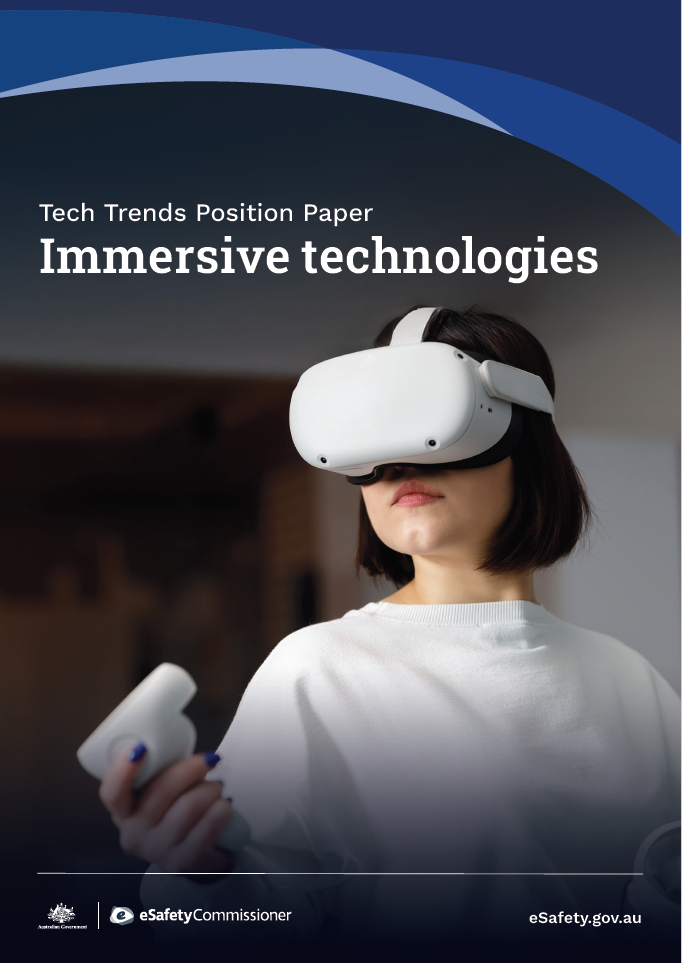Immersive technologies – position statement

Immersive technologies enable users to experience and interact with digital content in 3D, in ways that look, sound, and feel almost real.
They include augmented reality (AR), virtual reality (VR), and mixed reality (MR) – technologies that may be collectively referred to as extended reality (XR). They can be combined with haptic sensory technologies and spatial audio devices that provide a 3D soundscape.
Before the use of immersive technologies becomes even more widespread, we have a unique opportunity to proactively implement safeguards that prevent abuse and misuse, while also promoting their benefits.
Background
As part of eSafety’s commitment to remain current on and anticipate technological change, we review and update our published position statements where necessary.
In December 2020, we published a position statement on immersive technologies. Since then, immersive technologies have evolved and expanded in commercial availability. While these developments present new opportunities across various sectors, they also introduce new safety risks.
Risks and harms
Immersive technologies enable 3D interactions and real-time experiences that surpass geographical barriers and the limitations of traditional 2D media. Existing harms which are experienced both offline and in 2D online environments can be amplified in immersive environments. The features of immersive technologies – such as their hyper-realistic nature – can lead to new manifestations of existing harms.
Several harms are likely to be heightened in immersive environments:
- Terrorism and violent extremism.
- Child sexual exploitation and abuse.
- Exposure to age-inappropriate content and experiences for children.
- Sexual violence and gender-based violence.
- Negative online social experiences.
Opportunities
Immersive technologies can offer a range of opportunities for all individuals, when they are designed with inclusivity and accessibility in mind. This includes opportunities to:
- enhance educational and learning experiences
- serve as a complementary tool to aid therapeutic interventions.
Find out more
Further information about immersive technologies is provided in eSafety’s position paper. Topics covered include:
- What are immersive technologies?
- Exploring benefits and harms
- Online safety risks and harms
- Other related risks
- Opportunities
- Regulatory challenges and approaches
- Challenges
- How do immersive technologies fit within eSafety’s regulatory remit?
- Evolving domestic context
- Safety by Design measures
- Service provider responsibility
- User empowerment and autonomy
- Transparency and accountability
Download a copy
Click on the file link to download the full position statement.
Further information and resources
If you or someone in your care is experiencing serious online abuse or harm – whether or not immersive technology is involved – you can make a report to eSafety. You can also speak to a mental health professional through an expert counselling and support service.
Report incidents of child sexual exploitation and abuse material to the Australian Centre to Counter Child Exploitation. If you believe a child is in immediate danger, call 000 or contact your local police station.
eSafety’s Gift Guide has information about how to be online safety conscious with popular tech gifts, including immersive tech gifts.
You can also visit our Key topics page on immersive technologies to learn more about how they work, the benefits and risks, and tips for using them safely.
There is guidance available from Standards Australia on the latest ‘Children’s Safety in the Metaverse’ standard.
Last updated: 18/11/2025
